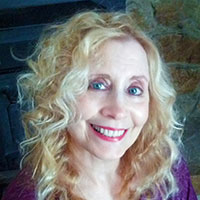The Advantages of Essential Oils for Psychics, Healers, and Empaths
 Essential oils have been revered for ages as vital companions in spiritual and healing practices globally. Derived from the fragrant essence of flora, these oils embody more than mere scents; they encompass the energetic signature and vibrational resonance of their plant origins.
Essential oils have been revered for ages as vital companions in spiritual and healing practices globally. Derived from the fragrant essence of flora, these oils embody more than mere scents; they encompass the energetic signature and vibrational resonance of their plant origins.
Within spiritual endeavors, essential oils serve as powerful instruments for emotional harmonization, energetic purification, and enhancing our bond with the self, soul, and earth, far exceeding their function as mere delightful aromas.
Essential oils serve as links between the material and the ethereal. They offer sensory signals that foster physical relaxation, mental clarity, and spiritual openness. While they are not substitutes for profound introspection or expert guidance, they provide gentle, reinforcing energy that amplifies current practices.
The practice of using essential oils in spiritual rituals is far from contemporary. Figures such as prophets, priests, shamans, and oracles in ancient civilizations utilized fragrant oils and resins as sacred instruments to engender divine contact, purification, and inner vision.
In ancient Egypt and the surrounding regions, frankincense and myrrh were esteemed not only for their scent but for their power to unlock spiritual portals. Frankincense, often dubbed “liquid gold,” was burned in temples and utilized in significant life events. Myrrh was included in revered anointing mixtures and was deemed essential for emotional liberation and spiritual harmony.
The Hebrew Bible outlines specific formulations of holy anointing oils comprising components like olive oil, galbanum, and cedarwood — each infused with distinct spiritual significance and energy. Galbanum, for instance, was acknowledged for its sharp aroma and was believed to symbolize the recognition of human imperfection, assisting worshippers in humbly approaching the divine.
Smell has the magical ability to transport you across vast distances and the entirety of your lived years ~ Helen Keller
Likewise, cedarwood imparted grounding and protective qualities, stabilizing the spiritual seeker in ritual contexts. These oils were not treated lightly — they were consecrated tools, utilized by prophets and seers to prepare the whole being for the reception of divine wisdom.
The renowned Oracle of Delphi also engaged with sacred plants. Bay laurel, revered by the deity Apollo, was employed to invoke prophetic visions; the priestesses would chew its leaves or inhale its smoke prior to conveying their divine communications. In various other traditions, oils like spikenard and agarwood were used to ready bodies and minds for spiritual ecstasy and healing.
Integrating these time-honored essences into our contemporary spiritual self-care connects us to a lineage of sacred knowledge. Each drop serves as a link to the past—a means to anoint ourselves not just with fragrance, but with the sacred reverberations of those who traversed the mystical route before our time.
In my own spiritual practice, I frequently incorporate essential oils into sessions, whether through anointing, diffusion, or guiding clients in breathwork meditations with specific oils. An experience with a spiritually attuned client notably stands out.
He approached me feeling inundated, anxious, and energetically “scattered.” Despite exploring meditation and journaling, he often felt adrift, as if his energy lingered too high above his body. This is a typical struggle for empaths and intuitive individuals.
During one of our consultations, I introduced him to vetiver essential oil. Vetiver possesses known grounding and stabilizing effects. It has a rich, smoky, earthy aroma that originates from the plant’s roots.
I guided him to place a drop of vetiver oil on his feet and the back of his neck as we practiced slow, intentional breathing. Then, we participated in a brief visualization to imagine roots stretching from his spine and feet deep into the heart of the Earth.
Essential oils access our subconscious and can elicit emotional reactions that facilitate healing without the hindrance of over-analysis ~ Margarita Alcantara
The change was immediate and profound. He expressed feeling “heavier—but in a good way,” as though he had finally returned to his body after a prolonged period of feeling detached. In the following weeks, he integrated vetiver into his daily spiritual practice. Utilizing it prior to meditation and in stressful moments assisted him in maintaining focus and emotional equilibrium. He even mentioned better sleep and an amplified sense of connection in his daily existence.
Grounding is a fundamental notion in spiritual and energetic endeavors. It embodies the sensation of being fully anchored, present, and linked to your body and the earth. In today’s fast-moving, digitally overstimulated environment, many people find it difficult to remain grounded. It’s common to feel scattered, anxious, or unconnected.
This is where essential oils originating from roots, resins, and woods become crucial. Their earthy vibrations naturally facilitate the grounding process, enabling us to feel secure, centered, and wholly present. Oils such as sandalwood, cedarwood, patchouli, and frankincense are particularly effective for grounding. Their deep, earthy scents resonate with the lower chakras, drawing our energy downward and rooting us in the now.
Frankincense, known for its sacred history and meditative fragrance, is frequently utilized for connecting with the divine and provides a soothing, centering effect. Cedarwood delivers a sense of stability and safeguarding, making it perfect for establishing a safe energetic environment during meditation or spiritual ceremonies.
I also incorporate essential oils into my personal life. For instance, I began using peppermint essential oil at the start of spring. Despite my efforts, I was unable to eliminate the ants. I tried various natural remedies and cleaning techniques, but nothing seemed effective. Then, I recalled that peppermint oil acts as a natural ant repellent. I applied it, and to my astonishment, it worked like a charm! The ants vanished, and the refreshing aroma of peppermint invigorated my space, offering mental clarity and spiritual renewal.
This experience reminded me that the solutions we seek are often within reach; we simply need to remain curious and open. Just like our spiritual paths, essential oils tend to unfold in layers. They meet us at our current state, providing insights, support, and healing precisely when and where we most require it.
Absorbed through the skin and through the olfactory-brain channel via inhalation, they have long been deemed among the most healing and rejuvenating of all botanical extracts throughout history ~ Valerie Gennari Cooksley
Whether you are embarking on your spiritual journey or are a seasoned practitioner, essential oils can be a beneficial element in your self-care rituals. Below are ten essential oils that I suggest for spiritual self-care:
Essential Oils For Spiritual Self-Care
Frankincense: Enhances meditation, deepens spiritual connection, and soothes the mind.
Sandalwood: Fosters inner tranquility and grounding. Ideal for sacred observances.
Vetiver: Profoundly grounding and stabilizing; ideal for empaths and anxious spirits.
Cedarwood: Provides protection and grounding. Excellent for establishing a sacred environment.
Lavender: Calms the nervous system and promotes spiritual clarity.
Myrrh: Anchors the spirit and facilitates emotional release.
Peppermint: Invigorates the mind, clears energetic clutter, and uplifts the spirit.
Patchouli: Balances the root chakra and enhances embodiment.
Rose: Opens the heart chakra and promotes self-compassion and love.
Clary Sage: Fosters intuition and harmonizes emotional energy.
May your journey be fragrant with intent and deeply rooted in the nurturing embrace of the Earth.
|
Mystic Shelley is a five-star psychic, Reiki healer, clairvoyant, and empathic reader. She provides her clients with truthful insights regarding past, present, and future events aided by her trusted guides. Her readings cover love, relationships, career, finances, and all areas of life. Mystic Shelley was endowed with abilities that would later define her as a gifted psychic, yet she initially chose not to embrace them. In her 30s, a serendipitous encounter with a renowned psychic set her on a path that awakened those gifts. Born with the abilities of clairvoyance and empathy, her spiritual mentor guided her in enhancing those skills, elevating her talents to new heights. With experience came expertise, and now she has a growing number of devoted clients who commend her work. Additionally, she actively supports other psychics in discovering their own abilities. If you seek straightforward and sincere insights, schedule a reading with Mystic Shelley now at PsychicAccess.com |
Essential oils have been utilized for centuries for their healing properties and therapeutic advantages. For psychics, healers, and empaths, these potent oils can be especially helpful in augmenting their skills and fostering overall well-being.
A primary benefit of essential oils for psychics, healers, and empaths is their capacity to bolster emotional and spiritual health. Numerous essential oils possess soothing and grounding characteristics that assist these individuals in maintaining focus and balance during their work. Oils such as lavender, frankincense, and chamomile are celebrated for their calming effects, helping to alleviate stress and anxiety, which in turn allows psychics, healers, and empaths to connect more effectively with their intuition and higher self.
In addition to providing emotional support, essential oils can enhance psychic capabilities and intuition. Oils like clary sage, juniper, and rosemary are thought to stimulate the third eye chakra, associated with intuition and psychic abilities. By incorporating these oils into meditation or during readings, psychics, healers, and empaths might discover that their gifts are more pronounced and readily accessible.
Moreover, essential oils can also be employed for energy cleansing and protection. Given that many psychics, healers, and empaths interact with energy daily, it’s essential for them to regularly clear and shield their energy fields. Oils like sage, cedarwood, and palo santo are frequently utilized for smudging and energy-clearing rituals, while oils like black tourmaline and obsidian can provide protective qualities.
In summary, essential oils can serve as invaluable resources for psychics, healers, and empaths seeking to enhance their skills, support their emotional health, and safeguard their energy. By weaving these powerful oils into their daily routines, they can cultivate a sacred and supportive environment that enables them to perform their best work while remaining aligned with their higher purpose. Continue reading

















